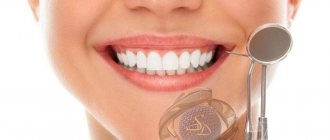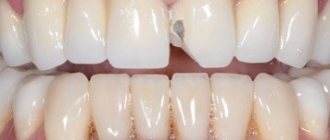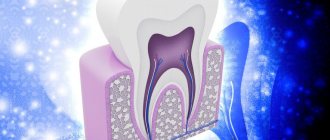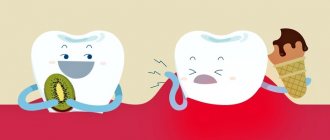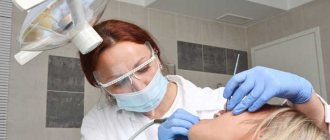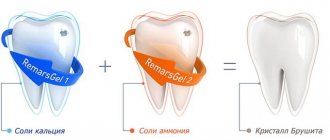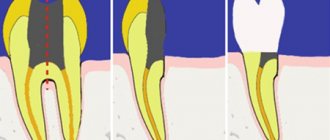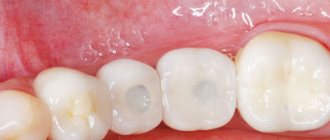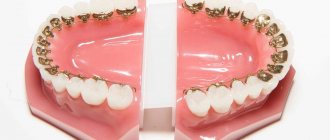There are a number of reasons (trauma, caries, short crown) why only the root and a small part of the crown remain from the tooth, and the rest of the dental tissue is lost. Until recently, in this case, fillings, a prosthesis were installed, or a tooth was removed. Currently, it is possible to use restoration options that allow you to recreate the original appearance of the tooth. The restored tooth looks natural and aesthetically pleasing. An important condition is that the root must be intact. Computer technology is used to create a copy of the crown of a future tooth.
Need for expansion
The question of the advisability of this operation can hardly be classified as controversial. With the exception of a number of contraindications (which will be discussed a little later in the corresponding section of this review), the decision to grow teeth turns out to be truly correct from both an aesthetic and functional point of view.
The technology currently used allows for prompt and high-quality restoration of worn teeth, as well as completely eliminating the consequences of chipping. And if for the rear, hidden from prying eyes, units of the dentition, the main parameters are reliability and practicality, then the front row, which is in plain sight, should also have excellent presentability. Fortunately, today all these problems are completely solvable.
For the restoration of primarily molars, a composite material is often used, which in its physical, safe and aesthetic properties is as close as possible to the natural original. As a result of the restoration, the incisors and molars are completely restored to their original natural shape and color.
Patient examination plan
Traditionally, the examination begins with getting to know the patient, collecting anamnesis and complaints. At this stage, the doctor finds out when the disease began, how it manifests itself, what it may be associated with (the patient’s lifestyle, previous treatment, harmful occupational factors, etc.). If the problem has just begun to manifest itself, then complaints as such may be absent or only slightly expressed. Typically, patients note discomfort when eating hot and cold food, chipping of the enamel or its thinning, and changes in diction (in later stages of the disease).
At the next stage, the doctor proceeds to examine the oral cavity, during which he evaluates:
- Bite.
- Overlapping of incisors.
- The shape of the dentition.
- The shape of the teeth.
Based on the data obtained, the doctor can prescribe additional research methods (radiography, MRI, electroodontodiagnostics, etc.), as well as consultations with more specialized specialists.
Extension methods
If we talk about extension methods, there are two of them:
- straight,
- indirect.
The first allows you to restore the incisor during a one-time visit to the dentist. The composite material is applied over the dental crown. The use of this technique is possible only in the presence of minor damage.
As for the indirect option, specialized overlay materials are used for its implementation: veneers, crowns, as well as various inlays.
A specialist carrying out such restoration activities is obliged to find a solution that will be the most rational and the only correct one for each individual situation. The choice of technique depends, in particular, on the following parameters:
- root integrity,
- condition of the bone-jaw tissue,
- area of the dental crown,
- condition of the gum tissue.
Below we will discuss the most popular restoration methods, which include:
- filling,
- pins,
- tabs,
- veneers,
- photopolymers,
- photocomposites.
Sealing
This is the simplest answer to the question “how does teeth building happen?” This method is chosen when the patient’s bone tissue is practically intact. Most often, filling is used when the enamel is excessively thin, there are significant interdental spaces, and damage to the front teeth.
This method has not one advantage, but several. Firstly, thanks to the tandem of modern technologies and specialist skills, the result is very accurate. Secondly, the plastic composite used has many shades, among which you can choose a color scheme that is as close as possible to natural. Thirdly, the composite material has a high degree of adhesion, growing tightly and forming a single whole with bone tissue.
Extension on a pin
If the root is preserved, a pin is often used to carry out restoration work. The latter can have different shapes and sizes, which allows you to choose the most optimal option in strict accordance with the anatomical features of the patient’s oral cavity. Most often, this method of extension is used to eliminate chips on the front teeth.
Modern dentistry uses, as a rule, 4 types of pins:
- gutta-percha (flexible, but prone to rapid damage),
- carbon (has good strength characteristics and is relatively inexpensive),
- fiberglass (the most rational option for the restoration of front teeth),
- anchor (the strongest, most reliable and durable).
Tabs
In another way, this method of extension is called microprosthetics. Its essence lies in the use of specialized inlays, which in fact are individually made fillings.
If there is a carious cavity on the chewing part of the tooth, there is a high probability of empty cavities forming. Of course, in this case, you can also get by with regular filling. However, only an inlay can completely fill the cavity and also prevent changes in the bite.
Often, individual inlays are made of ceramic or porcelain. Such materials perfectly retain the original shade and do not lose other original characteristics, which, as has been said many times, is the most optimal combination.
Extensions using inlays are usually practiced in situations where most of the crown is chipped. If the area to be restored is invisible when smiling, an individual inlay can be made of metal, the prices of which are noticeably lower, and the practical properties are in no way inferior to ceramics and porcelain.
Veneers
We are talking about thin porcelain plates, the lining and fixation of which is carried out on the outer part of the tooth. This option is used for a variety of damage to the anterior units of the dentition.
As a result of using veneers, your smile becomes flawlessly even. Moreover, the material used usually lasts for about 10 years, without losing its original shade even with systematic smoking, as well as drinking coffee and all kinds of carbonated drinks that contain a coloring pigment.
However, veneers also have some disadvantages. Firstly, before installation, careful grinding of the tooth is required so that the latter does not protrude from the general row in the future. Secondly, due to the ideal proportions obtained as a result of such extensions, the naturalness of the smile is sometimes somewhat lost.
Photopolymer
The use of photopolymers is relevant in case of significant wear of the crown or extensive carious damage. To strengthen the result, during the process of filling the affected areas, the material used is exposed to ultraviolet radiation.
Important warning: if there is inflammation in the oral cavity, the use of photopolymers is contraindicated.
Composite
The main purpose of photocomposites is to eliminate cosmetic defects. The latter include cracks, chips, and other minor damage.
The material hardens under the influence of an ultraviolet lamp quite quickly, ultimately obtaining the required shape. One visit to the orthopedic dentist - and such a cosmetic issue is guaranteed to be resolved.
What is dental restoration?
Dental extension or restoration is a procedure for restoring a damaged tooth using modern technologies and materials in aesthetic dentistry. External defects in the oral cavity are eliminated in such a way that the restored teeth are in harmony with the rest and are completely indistinguishable from them.
A specialist in the field of aesthetic dentistry will evaluate the condition of the damaged and adjacent teeth, and the characteristics of the bite. After which he will be able to answer the patient’s question about the possibility of recovery. If this method is not suitable based on the clinical picture, the doctor will suggest considering the possibility of another method. For example, installing veneers. If there is such a possibility, after agreeing on all the details with the patient, the specialist will be able to tell how much it costs to restore a particular tooth.
Modern aesthetic dentistry, in particular the direction of restoring the shape of a tooth, has a number of terms that denote, first of all, the fact of restoration, and secondly, the achievement of high aesthetics. Among them are aesthetic restoration, cosmetic restoration, artistic restoration. These terms are synonymous and refer to dental restoration with a highly attractive result.
Which restoration method to choose?
There is no clear answer here for obvious reasons. It all depends on the degree of damage that the crown and root have. If we talk about the direct method, it is as gentle as possible, since its implementation does not require first removing the nerves. The composite material is applied to the crown in layers. At the same time, the tooth is still “alive” and is able to perform its original functions.
It is not possible to use the indirect method without first removing the nerves. An orthopedist implants inlays and pins into the root canals of a tooth with a dead nerve, after which a layer-by-layer application of composite material is performed. If the patient has significant damage to the crown, this extension option is the only possible one.
As a result, pathological abrasion of teeth occurs
The pathogenesis of the disease involves several factors, both external and internal.
| Endogenous factors | Exogenous factors |
| Metabolic disease. Gastrointestinal diseases. Pathology of the endocrine system. Bruxism (teeth grinding). | Patient's nutrition. Nature of working conditions. Incorrect prosthetics. |
The greatest influence on the abrasion process itself is exerted by occlusal forces, which have the following characteristics:
- The amount of chewing force. It is determined by the strength of the masticatory muscles, which can range from 80 to 400 kg. It is necessary to take into account that teeth are under stress not only when chewing food, but also when swallowing, and a person performs several thousand swallowing movements per day.
- Duration. During the day, the occlusal surfaces of the teeth come into contact with each other for half an hour, but with pathology, this figure can increase significantly.
- Application point and direction. The occlusal force is directed at right angles to the chewing surface of the tooth. Normally, the contact area is several square millimeters, but with pathology it can increase several tens of times, which leads to greater efforts when chewing.
In the presence of harmful production factors, bruxism, fluorosis and other reasons mentioned above, all characteristics of occlusal forces change for the worse, which leads to tooth abrasion.
Extension of various types of teeth
Depending on the type of teeth, the extension process may have some features. But since the most common techniques have already been discussed above, the focus in this section will be on the main problems, as well as the reasons for their occurrence.
Front
According to statistics, the front teeth are mechanically damaged quite often. As a result, chips, cracks and other defects form. It is also not uncommon for a fairly large fragment of a tooth to break off due to injury.
Another problem with the front teeth is abrasion. And if the patient has a direct bite, then such a problem becomes completely pathological.
Special types of abrasion include the so-called “horseshoe” abrasion, which is typical for those who like to chew seeds.
Extensions using composite materials will help solve all of the above problems, as well as eliminate gaps between teeth.
Chewable
The destruction of chewing teeth is also not uncommon. The main reason is caries (especially deep caries), as a result of the treatment of which significant cavities are formed, filled with filling materials.
The use of modern gentle techniques makes it possible to preserve the tooth root even in cases that were previously considered hopeless. As for the restoration of the coronal part, the most effective methods in this case are the installation of an inlay and a crown.
Crown as a way out
Pathological tooth wear can be eliminated with the help of crowns. They can be installed both on the front teeth and on the chewing teeth and restore the aesthetics and functionality of the oral cavity. Crowns can be made from various materials, each of which has its own advantages and disadvantages:
| Material | pros | Minuses |
| Metal ceramics | Durability, high aesthetic qualities, not the highest price | Depulpation of the tooth and grinding of a large amount of hard tissue are required. |
| Metal-free ceramics | The best aesthetics that are not lost over time, high strength, durability. | High price. |
| Metal | High strength, durability, low cost. | Lack of aesthetic qualities. |
When choosing a certain material, the patient must understand that he will need to replace a large number of crowns (perhaps even all). Therefore, it is worth giving preference to those materials that have good aesthetic qualities and a long service life.
After all the nuances of prosthetics have been agreed upon, we proceed directly to the procedure itself. At the first stage, the oral cavity is sanitized and teeth are prepared for crowns. Next, the doctor takes impressions of the jaws, based on which the dental technician makes a prosthesis. These operations may take some time, so the patient may be offered temporary plastic crowns. They will protect prepared teeth from the aggressive environment of the oral cavity and help adapt to new teeth. After the final version of the prosthesis is ready, it is tried on again and fixed with permanent cement.
Pros and cons of extensions
The objective advantages of artistic restoration include:
- safety (the method is suitable even for children),
- possibility of restoration even with significant chips,
- high degree of strength of the extended part,
- natural appearance.
As for the disadvantages, these include the comparative high cost. Despite the variety of methods and price categories, most often this procedure is not cheap.
Another disadvantage is that to ensure safe conditions for the restored area, it becomes necessary to wear a mouth guard during sleep.
Indications and contraindications
The procedure is recommended for the following problems:
- cracks and chips,
- enamel damage of various types,
- injuries resulting in disruption of the integrity of bone tissue,
- the impossibility of restoring the shade of enamel through cleaning and whitening procedures,
- malocclusion,
- high degree of enamel wear,
- loss of part of a tooth due to caries.
There are also situations in which extensions are contraindicated:
- the patient has individual allergic reactions to the filling materials used,
- the impossibility of isolating the area of the oral cavity where the extension is expected from moisture (under such conditions it is impossible to achieve high-quality drying and fixation of the composite),
- bruxism (if a crack in the enamel appears due to grinding of teeth during sleep, it is necessary to initially get rid of bruxism; otherwise the likelihood of chipping of the extension material is quite high),
- early age (pins are not installed for children; other acceptable methods of extension are not used for untreated caries, as well as some other diseases).
The essence of the methods: how to build up or install a prosthesis?
A crown is a dental prosthesis that is made of hypoallergenic and durable material. The crown is made only in the dentist's office and using previously made impressions.
But, at the time of manufacture, the patient is offered a temporary prosthesis, which is made of composite material.
When the crown is ready, the patient’s tooth is ground to the required parameters. Next, the doctor treats the surface with a special solution. The doctor also treats the dental canals, and then proceeds to install the onlay. The procedure is not the easiest, so one visit is not always enough. Most often, dentures are installed when the root is missing or the tooth is destroyed by 80% or more. At other times, the dentist suggests extensions.
Before tooth augmentation, an x-ray must be taken . In this way, it is possible to determine the location of the root, nerve and the level of destruction of the dental cavity. If not everything is so neglected, then tooth restoration begins.
- First of all, necrotic tissue is removed and cleaned.
- The damaged area is sealed. The entire procedure is performed under anesthesia.
- Then the cavity is cleared of saliva and respiratory evaporation for treatment with a special substance.
After all the steps, tooth extension is carried out.
The tooth is built up in several stages:
- Select the appropriate size and shade of enamel.
- The restored tooth is ground and polished.
- Dental procedures are carried out.
Teeth extension is carried out in two ways - direct and indirect:
- The direct option is to work with dental filling materials.
- The indirect method is performed only by a podiatrist or dental technician.
Reliability and service life
The service life of the extended tooth elements varies quite significantly. Average range: 5 to 20 years. This difference is explained by several factors:
- selected material and extension method,
- individual characteristics of the patient,
- quality of workmanship,
- care of handling.
Systematic preventive visits to the dentist, as well as additional polishing of the tooth surface using specialized drill discs, will help to avoid shrinkage and fading of the composite over time.
